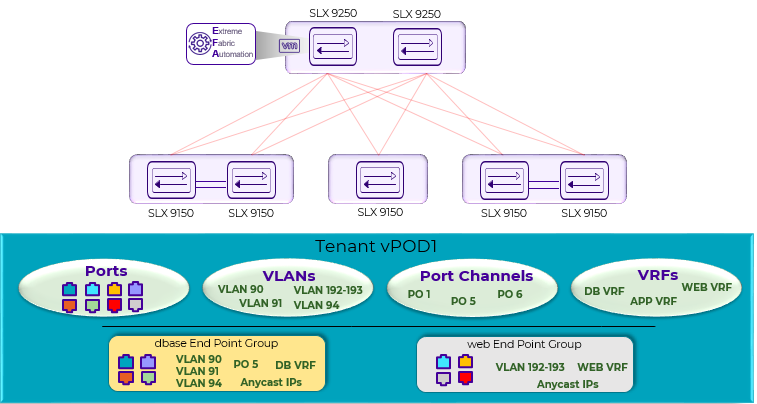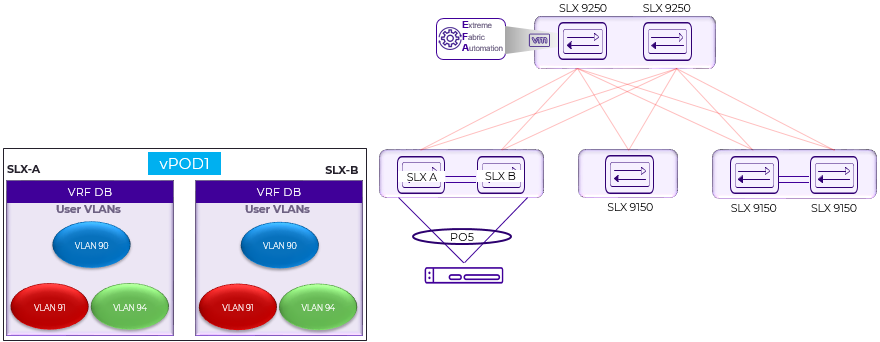Tenant Services Provisioning Overview
Tenant Services exposes the CLI and REST API for automating the Tenant network configuration on the Clos and Non-Clos overlay fabric.
Tenant network configuration includes VLAN, BD, VE, EVPN, VTEP, VRF, and Router BGP configuration on the necessary fabric devices to provide L2-Extension, L3-Extension across the fabric, L2-Handoff, and L3-Handoff at the edge of the fabric.
Tenant Services provisioning automates the Tenant configuration, which can be a subset of the combinations provided by the switching hardware.
Tenant Services supports multiple fabrics.
Tenant


A Tenant is a logical construct that owns resources as follows:
- VLAN range: Ctags pertaining to which the
traffic is expected to ingress and egress.

Note
Ctag (Customer VLAN tag) is used to identify the customer broadcast domain. In the IP Fabric network, it represents the customer and is mapped into a VXLAN tunnel thru a VNI (virtual network identifier). The VNI is the ID used to identify the VXLAN tunnel. With auto VNI mapping the Ctag ID equals the VNI. Users can also manually map Ctags to user-defined VNIs. These VNIs can be VLAN IDs (up to 4k) or to BD‘s (bridge domain) IDs. - Device ports: Ports on which the traffic is expected to ingress and egress.
VLAN-based Tenant
For a VLAN based tenant, realization of network on the device is done using VLAN and switchport VLANs. Bridge domains are used for EVPN IRB.
Bridge domain-based Tenant
For a BD based tenant, realization of network on the device is done using BD and BD-LIF. BD is used for EVPN IRB.
Scalability
| VNI type | Scale |
|---|---|
| Non-auto VNI mapping |
|
| Auto VNI mapping |
|
Event handling
Event handling specifies the scope of the tenant configuration on the devices.
Devices are added to the Tenant service only when the Fabric is provisioned on the devices.
An event is an occurrence of a device being removed from the Fabric or from the Inventory.
- When a device is removed from the Fabric or Inventory, the device is cleaned up from Tenant Service and the Tenant configuration is removed from the device.
- User-created entities, such as Tenant, VRF, and EPG, are not deleted whereas references for ports/port-channels of deleted devices are removed.

